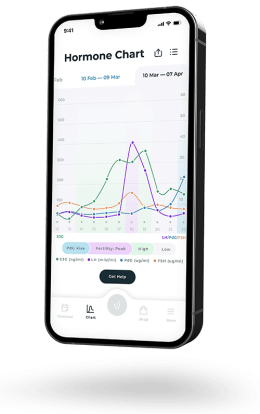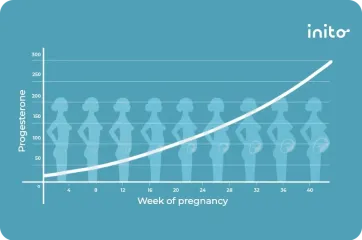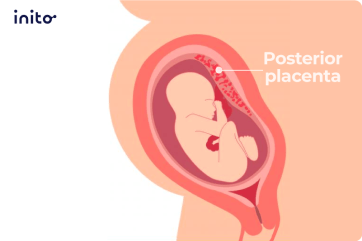Content table
You’ve done it all. You tracked your ovulation. You did the deed within your fertile window. And now you’re counting the days till you can pee on that stick and finally get some answers.
But how long after ovulation can you take a pregnancy test?
Truth?
It’s best to wait until the first day of your missed period before taking a pregnancy test.
Yes – there are pregnancy tests out there that make some bold claims about testing early.
But if you test too soon, you run the risk of getting a negative result – even if you’re pregnant!
So read on for the lowdown on how soon after ovulation you can test for pregnancy to get the most accurate result.
But first, let’s do a quick refresh on how these tests work.
Takeaways
- Home pregnancy tests detect the levels of human chorionic gonadotropin (hCG) hormone in your urine.
- hCG begins rising after implantation, which typically occurs around 8-10 days after ovulation.
- The best time to take a pregnancy test is around 14-15 DPO or the first day after you miss your period.
- Most home pregnancy tests are 99% accurate when taken the first day of your expected period.
- Testing too early may result in a false negative, as your hCG may be too low to detect.
- When to test for pregnancy after ovulation will depend on the sensitivity of the test and when implantation occurred.
- For the most accurate results, always test with your first-morning urine and follow the instructions carefully.
How do home pregnancy tests work?
Knowing the basics of ovulation and implantation helps to understand how pregnancy tests work.
Ovulation is when an ovary releases a mature egg into the fallopian tube. If you’ve timed things right and had sex within your fertile window, sperm may be there to greet the egg.
If fertilization happens, the egg reaches your uterus, preparing for implantation.
During implantation, the fertilized egg burrows into your uterine wall, preparing for the long journey ahead.
Implantation typically happens around 8-10 Days Past Ovulation (DPO). But it can happen anytime between 6-12 DPO.
Once an egg implants, your body produces the human chorionic gonadotropin (hCG) hormone.
hCG is the hormone pregnancy tests detect in your urine to deliver that beloved big fat positive (BFP). However, it takes time for your hCG levels to build enough to give a positive result.
Since implantation windows vary, knowing the right time to test can be tricky.
How many days past ovulation can you test?
Most pregnancy tests recommend waiting until the first day of your missed period to test.
This will fall around 14-15 DPO or roughly two weeks after ovulation.
So why the long wait?
Well, by then you’ll have a 99% chance of getting an accurate result, assuming you followed the instructions to the T.
This is because most tests need hCG levels of 25 mIU/mL to yield a big fat positive.
After implantation, hCG levels double roughly every two days before peaking around week 10.
Yet it takes several days for hCG to reach that magic threshold and give you a positive result on your pregnancy test.
If you had a late implantation but tested too early, your hCG may not be high enough to give you a positive result – even if you’re pregnant!
This can put you through a lot of unnecessary heartbreak.
So for the most accurate results, it’s best to wait until around 14-15 DPO to take a pregnancy test.
How soon will a pregnancy test read positive?
It depends on the sensitivity of the test and when implantation occurred.
Some sensitive tests claim to yield positive results as early as four days before your missed period (or around 10-11 DPO).
While this may work for some, even with the most sensitive pregnancy tests, there’s still a chance of getting a false-negative result.
Let’s say your implantation day happened late (around 12 DPO). You would still get a negative result no matter how sensitive the test is!
So while it’s tempting to take a pregnancy test early, testing on the first day of your missed period is the safest bet.
How soon will a blood test detect pregnancy?
Blood tests can pick up on hCG sooner than urine tests. In fact, some blood tests can detect hCG as early as 6 to 8 days after ovulation.
But there are a few downsides to blood testing. The main one is that most doctors won’t perform a blood test until after your period is due.
Plus, with blood tests, you may have to wait a couple of days to get results. That’s why most women opt to take a home pregnancy test instead.
Is it possible to get a false positive?
Yes.
Pregnancy tests are 99% accurate when used correctly. But it’s still possible to get a false-positive result.
Here are a few ways false positives can happen:
Chemical pregnancy
This is a very early miscarriage that happens before the 5th week of pregnancy. During a chemical pregnancy, the egg implants briefly but then stops developing.
Many chemical pregnancies happen so early that women don’t know they are pregnant. Although implantation is short-lived during a chemical pregnancy, it still causes hCG levels to rise.
So if you get a positive test, followed by a negative result a few days later, you may have had an early miscarriage.
Ectopic pregnancy
This is when a fertilized egg attaches outside the uterus (usually in the fallopian tube).
Ectopic pregnancies can cause abdominal bleeding and can be fatal, so they demand prompt medical attention. So if you experience severe abdominal pain, call your doctor right away.
Fertility drugs
Some fertility drugs include hCG to help stimulate ovulation. If you have an hCG trigger shot and take a pregnancy test soon after, you may get a false positive.
That’s why it’s important to speak with your doctor if you’re in fertility treatment. They can explain how these meds may skew your pregnancy test results.
Medical conditions
Believe it or not, certain tumors in the ovaries, cervix, breast, and even stomach can increase hCG levels, leading to a false-positive result on your pregnancy test.
Evaporation lines
A faint line may appear if you let a pregnancy test sit too long before reading the result. These are known as evaporation lines and can be easily mistaken for a positive pregnancy test.
So, for the most accurate results, it’s crucial you follow the instructions carefully.
How to avoid getting a false negative pregnancy test?
Home pregnancy tests are excellent at detecting pregnancy – when done correctly.
Here are some tips to help you get the most accurate results:
Don’t test too early
When you’re trying to conceive, the temptation to test early is strong. But if you test too soon, your hCG may not be high enough to detect, leading to a false-negative result.
Yes, the two-week wait can feel like a lifetime. But waiting to take a home pregnancy test until your period is due gives you the best chance of getting a positive result.
Test in the morning
Your hCG levels are most concentrated in your first-morning urine. So, always take a pregnancy test in the morning for the highest accuracy.
Follow the instructions
Read the instructions carefully and wait the right amount of time to read the results. If you wait too long, you may get an evaporation line and mistake it for a positive pregnancy test.
Avoid drinking water before testing
Drinking too much water before testing, it may dilute your hCG levels and throw off your test results. So pee on that stick right when you wake up, and then hydrate.
Other early pregnancy indicators
Getting a positive pregnancy test or an ultrasound is the only way to confirm pregnancy. That said, there are a couple of other clues that may suggest you’re pregnant:
Implantation bleeding
When an egg implants, you might notice light bleeding or spotting. Implantation bleeding usually happens around 10-14 DPO or a few days before your period is due.
Cramping
Implantation can cause abdominal cramps as the egg attaches to your uterine wall. These tend to be milder than menstrual cramps.
Tender breasts
Hormonal changes in early pregnancy can cause breast tenderness and swelling. Your nipples may also appear darker.
Nausea
One of the telltale signs of early pregnancy is nausea and vomiting. Although nicknamed ‘morning sickness’, this symptom can linger the entire day.
Frequent urination
Feel like you’re running to the bathroom non-stop? Your body needs extra fluids to grow a new life, making your kidneys work overtime.
Mood swings
Early pregnancy can take your hormones on a roller-coaster ride. Since estrogen and progesterone levels are on the rise, you can experience frequent mood swings, indicating pregnancy.
Progesterone levels
High progesterone levels can also hint about whether there’s a baby on board. After ovulation, progesterone rises to support a possible pregnancy. So, if conception succeeds, progesterone levels keep rising throughout early pregnancy. This rise in progesterone may make you sleepy or even flat-out exhausted.
Inito tracks all four fertility hormones—estrogen, progesterone, FSH, and Luteinizing Hormone (LH) that indicate pregnancy. It provides personalized hormone charts, so you know the best time to take a pregnancy test. This can be especially helpful for people with unpredictable cycles.
Learn More: What Your Progesterone Levels Mean After Ovulation
Was this article helpful?
- Time of implantation of the conceptus and loss of pregnancy
- Strips of Hope: Accuracy of Home Pregnancy Tests and New Developments – PMC
- When to Take a Pregnancy Test | Options, Cost and Accuracy
- https://www.womenshealth.gov/pregnancy/you-get-pregnant/knowing-if-you-are-pregnant
- Using Human Chorionic Gonadotropin as a Tumor Marker | AACC.org

















